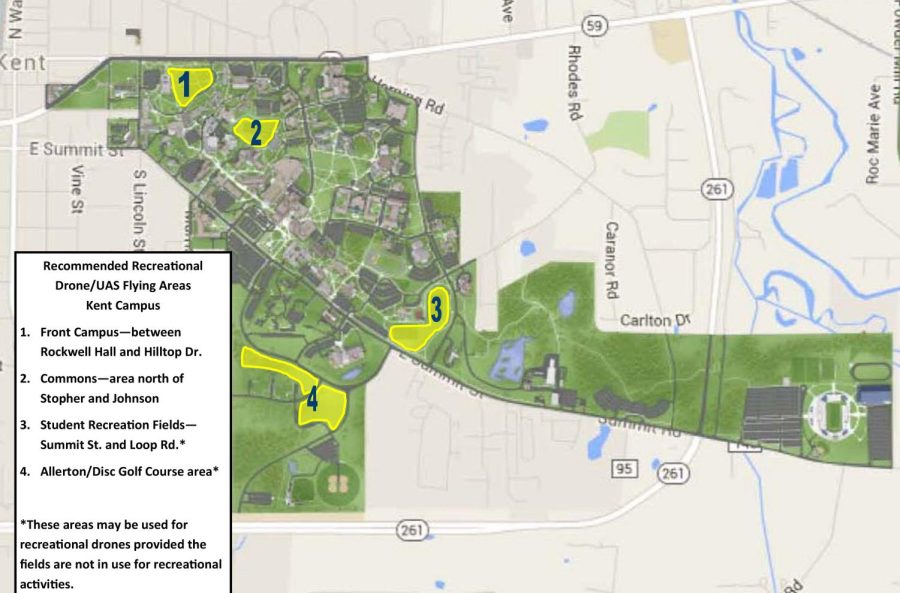Department of Public Safety sets guidelines for drone use on campus
January 27, 2016
Students returning to campus after winter break that brought back shiny, new drones may have a few more hoops to jump through before taking it to the skies.
In response to the recent spike in popularity of drones, or unmanned aircraft systems, the Kent State Department of Public Safety released guidelines for recreational use of the flying gadgets on campus. These guidelines offer safety tips and stress the registration requirement set by the Federal Aviation Administration.
Some of the rules listed prohibit flying drones near people, buildings and sporting events.
“Since the vast majority of drones used on campus will be recreational, almost on the level of a toy, we don’t want to be overly restrictive,” said Bill Buckbee, assistant director of Public Safety.
A map highlighting the four recommended on-campus flying areas was also provided. Recent Kent State aeronautical systems engineering graduate Alexander Flock, designer of the map, said the drone zones were decided upon based on their distance from residence halls and traffic and compliance with FAA regulations. Two of the areas include the front campus between Rockwell Hall and Hilltop Drive and the commons area north of Stopher and Johnson Halls.
“My primary concern when coming up with the locations was the safety and privacy of students and also the safety and security of the campus,” Flock said. “(Drones) are still a huge gray area in the (aeronautics) world and boundaries are just now starting to be defined.”
Though students are not strictly confined to the recommended locations, Buckbee said they are the best places to ensure laws aren’t broken.
One law Buckbee is concerned with includes students not being aware of the FAA’s mandatory registration, which began December 2015. While the FAA estimates 1 million drones were sold over the 2015 holiday season, it is reported that only 300,000 were registered as of Jan. 22.
Registration can be done online at faa.gov, and must be completed by Feb. 19.
Once registered, there is still one more step before capturing birds-eye view photography of Kent State. Since the main campus is within five miles of the Kent State University Airport, everyone must send an email to the airport manager that includes contact information, FAA registration number, and the location and time of drone-use. This measure prevents any interference or mishaps with larger aircrafts.
Drones may be more than just a hobby for some this semester. Since the College of Applied Engineering, Sustainability and Technology offers a minor in UAS studies, drones will appear on several syllabi.
“I think it’s great that there has been a lot of interest in the use of UASs on campus,” Flock said. “They are becoming easier for the normal user to understand but are still very complex.”
As for policing the drone policy, Buckbee hopes no enforcement is necessary and instead aims to inform students on responsible use of the technology. Ohio has laws in place for reckless operation of an aircraft that can be met with fines and even jail time.
This semester, Kent State also issued policies on another popular gift from the 2015 holiday season: the hoverboard. While that device was banned in all residence halls, the same fate for drones appears unlikely.
“The nature of drones would have to change drastically,” Buckbee said. “I don’t see there being any outright bans.”
Benjamin VanHoose is an entertainment reporter for The Kent Stater. Contact him at [email protected].












